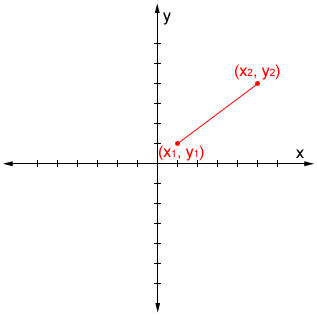Distance
Distance is a measurement of the amount of space between objects. It can refer to a specific measurement of length, or can be used more loosely. For example, "There is a good coffee shop a couple of blocks to the east."
Physical distances
Distance traveled is likely one of the most familiar concepts of distance. Whether it be how far it is from your home to the mailbox, school, or office, distance traveled is simply the length of a path taken from one point to another.
Another type of physical distance is straight-line distance, also referred to as Euclidean distance. When traveling between two points, it is not always possible to use the straight-line distance. Euclidean distance is the length of the shortest possible path that can be taken between two points, given that there are no obstacles.

The figure above shows the difference between Euclidean distance and distance traveled. The orange dotted line shows the path taken, while the blue line shows the shortest possible path betweeen points A and B.
Distance formula
Unlike physical distances, which are measured using various methods and measurement tools, distances in geometry, specifically the distance between two points in the coordinate plane, can be measured using a formula,
where d is distance, (x2 - x1) is the change in x (the horizontal distance), and (y2 - y1) is the change in y (the vertical distance) between two points.

Example
Find the distance between the points (1, 1) and (5, 4) using the distance formula.
Therefore, the distance between the points is 5 units.
The distance formula is derived using the Pythagorean theorem. For more detail, refer to the distance formula page.
